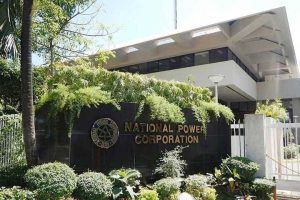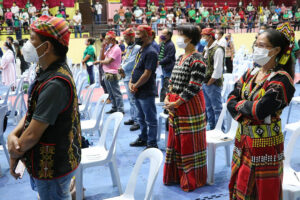NPC sees lower generation rate for missionary areas due to hybridization

By Sheldeen Joy Talavera, Reporter
STATE-RUN National Power Corp. (NPC) expects a reduction in the true cost of generation rate (TCGR) of around P2 to P3 per kilowatt-hour (kWh) with the implementation of its hybridization program in missionary areas.
“In terms of the true cost of energy, it will go down to P2 to P3,” Rogel T. Teves, NPC’s vice-president for corporate affairs group, said during a Senate budget hearing on Tuesday.
TCGR refers to the full efficient cost of generating power in an area.
NPC is currently implementing two types of hybridization programs. One is internal, while the other is called the Accelerated Hybridization Project (AHP), which seeks to allow the private sector to enter off-grid areas and set up renewable energy generation plants or facilities.
This is intended to supplement, augment, or replace the existing capacities in the operations of its Small Power Utilities Group (SPUG) diesel power plants.
“Our initial estimates for 2025 are that we can save up to P1.3 billion in fuel costs if we are able to hybridize all,” NPC President and Chief Executive Officer Fernando Martin Y. Roxas said.
Mr. Roxas said that the firm has completed three hybridization projects while seven are ongoing. For 2025, 16 hybrid systems are slated for implementation by NPC across the country.
Mr. Roxas pointed out that NPC is responsible for 30% of the energy market share in missionary areas, while 70% is the private sector.
“But of course, our 30% will make an impact,” he said.
AHP aims to reduce Universal Charge for Missionary Electrification (UCME) subsidies, reduce the use of diesel fuel and its cost, and increase loads of electric cooperatives from renewable energy resources.
As authorized by Republic Act No. 9136, or the Electric Power Industry Reform Act, the UCME is collected from on-grid electricity end-users to fund Napocor’s electrification programs and projects, particularly in remote areas not connected to the grid.
“UCME has been going up; it has gone up dramatically since 2015 [which was] P7.3 billion. Now, we’re hitting P24 billion in terms of subsidies, and all of us in the on-grid areas pay for this,” Sen. Sherwin T. Gatchalian said.
“I would assume this P24 billion, probably the majority of this goes to diesel payments. So, whenever diesel costs go up, UCME will go up. Now, since we’re hybridizing, we’re now consuming less diesel, so theoretically, UCME will go down,” he said.
Napocor is mandated to provide electricity to all far-flung areas not connected to the main grid through SPUG plants.
As of June, Napocor operates 165 SPUG plants in 155 areas across 140 islands.
“By 2025 yearend, we would like to increase our total SPUG plants from 165 to 201… increase our service areas from 150 to 191 areas and from 140 to 176 islands,” said Crisanto V. Hilario, NPC’s vice-president for administration and finance.
Meanwhile, Mr. Hilario said that the firm is seeking the endorsement of the Senate finance committee in highlighting the urgency of obtaining approval from the Energy Regulatory Commission for the approval of at least P11.54 billion in pending true-up applications.
“For every billion pesos that NPC is not able to reimburse by the year-end of 2024, to be used to pay primarily for fuel expenses, NPC will be constrained to curtail electricity service by 2.1 hours beginning March 2025 next year, affecting close to 1.78 million households,” Mr. Hilario said.
Of the P3.035-billion proposed national government subsidy for NPC, P1.61 billion will be allotted for the Total Missionary Electrification Program, where it is committed to providing power access to households in remote areas.
NPC aims to provide access to electricity to 6,000 to 11,170 households out of 500,000 households as of March that are deemed economically unviable by electric cooperatives and private distribution utilities.




